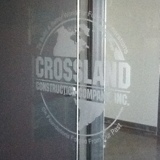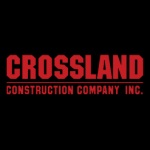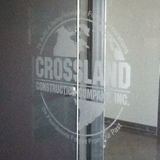Title Page
-
Document No.
-
Audit Title
-
Client / Site
-
Conducted on
-
Prepared by
-
Location
-
Personnel
-
The Christchurch City Council Consenting & Compliance Group has prepared guidelines to assist builders to be ready for residential
inspections. The guidelines include the minimum requirements of each inspection. They are not an exhaustive list of all the
residential inspection requirements. If any of the minimum requirements are not satisfied then the inspection will fail.
These guidelines are based on the schedule of construction.
201 Pre-Pour Foundation
Documentation
-
Before this inspection can take place the following must be onsite and in good condition:
-
Issued Building Consent (section 51), Advice Notes, Schedule of Inspections and Supporting<br>Documents and Specifications
-
Consented/Amended Plans with the consent stamp
-
Copies of site inspection reports conducted by an engineer, where required
-
Building Location Certificate - if required in the building consent Construction Documentation and<br>Advice Notes
-
Restricted Building Work - Provide all Records of Work on regulated form 6A.
Dimensions
-
Check the building dimensions against the consented documents. Ensure that all boundaries are
defined: -
Check that the building complies with the consent documents for set backs
-
If a Building Location Certificate is required ensure that it is available for the inspector to review
-
The inspector has the right to request a Building Location Certificate if not satisfied about the location<br>of the building.<br>Where dimensions differ from the consented documents, check with the Council to see if amended<br>plans will be required for the inspection.
Ground Conditions
-
If weak or liquefiable ground or fill is identified, or it is a condition of the consent, a registered<br>geotechnical engineer must confirm that the ground conditions are suitable for the proposed building<br>work. The written confirmation from a registered geotechnical engineer must be available for the<br>inspector to review.
Surface Water
-
Check that the building is not sited in a position where surface water will cause a nuisance.
Minimum Floor Level
-
If there is a minimum floor level restriction, a registered surveyor must inspect and confirm by a<br>Building Location Certificate that the proposed building will comply with the minimum floor level<br>restriction.
Maximum Building Height
-
If there is a maximum building height restriction, a registered surveyor must inspect and confirm<br>by a Building Location Certificate that the proposed building will comply with the maximum height<br>restriction.
201 Pre-Pour Foundation / 203 Pre-Pour Floor
Documentation
-
Before this inspection can take place the following documents must be on site and in good condition:
-
Issued Building Consent (section 51), Advice Notes, Schedule of Inspections and Supporting<br>Documents and Specifications
-
Consented/Amended Plans with the consent stamp
-
Copies of site inspection reports conducted by an engineer, where required
-
Restricted Building Work - Provide all Records of Work on regulated form 6A.
-
Building Location Certificate - if required in the building consent Construction Documentation and<br>Advice Notes
Slab On Ground
-
This inspection must be conducted before the concrete is poured
-
Damp proof membranes are in place, lapped and taped correctly
-
Reinforcing is in place, steel placement is correct, all steel is tied, mesh is supported adequately on<br>chairs and shrinkage control joints are formed
-
30mm or specified cover is maintained from the mesh to the top of the slab
-
75mm or specified cover to steel at the edge of the slab [where not in contact with ground]. Specific<br>engineered design slabs may differ.
-
Slab thickenings and point loads are in place (and that plumbing pipes do not penetrate load<br>bearing pads without specific engineered design)
-
Waste, drain and soil pipes have not been displaced and that their dimensions and the gradient do<br>not vary from the consented requirements
-
Pipe work embedded in concrete is protected
-
If the hard fill below the slab exceeds 600mm in height, the engineer is to provide a producer<br>statement construction review (compaction certificate) to verify compaction.
Raft Slab
-
This inspection must be conducted before the concrete is poured
-
Check and determine if the raft floor includes any piles
-
Damp proof membranes are in place, lapped and taped correctly
-
Reinforcing is in place, steel placement is correct, all steel is tied, mesh is supported in chairs and<br>shrinkage control joints are formed
-
Correct concrete cover to top of slab is maintained
-
Correct concrete cover to slab edge is maintained
-
Slab thickenings and point loads are in place
-
Waste, drain and soil pipes have not been displaced and that the gradient has not been altered
-
All raft floors are subject to an engineer’s check. The engineer is to provide a producer statement
construction review on completion of the work.
Pre-Roof
Documentation
-
Before this inspection can take place the following documents must be on site and in good condition:
-
Issued Building Consent (section 51), Advice Notes, Schedule of Inspections and Supporting<br>Documents and Specifications
-
Consented/Amended Plans with the consent stamp
-
Copies of site inspection reports conducted by an engineer, where required
-
Restricted Building Work - Provide all Records of Work on regulated form 6A.
-
Full roof truss as-built plan / layout.
Framing
-
This inspection must occur before any building wrap/paper is fixed and the roof cladding is installed.
Unless stated otherwise all checks are to ensure that the building work complies with the building
consent. -
That all previous site instructions have been completed/resolved
-
Roof framing is complete including member location, size, span, support, and fixing
-
Truss installation is as per the as-built plan
-
All fixings to the truss and frame match the as-built plan
-
Roof bracing and bottom chord restraint
-
Gable end bracing over roof section of end walls
-
Purlin size and fixing
-
Outrigger length and connections
-
Post to beam connections
-
Window layout and lintel sizes
-
Framing size, timber species, treatment and stress grade confirming compliance with NZS<br>3604:2011 Timber-framed buildings
-
Bottom plate, lintel and stud to top plate fixings
-
Bottom / top plate size and position
-
Stud sizes and centres
-
Joist sizes and centres
-
The fixings associated with external and internal bracing elements. This includes checking bracing<br>layout, type and hold downs that are required
-
Steel beam locations and fixings
-
Fire wall connections at bottom plate
-
Fire wall solid blocking at the roof/soffit
-
Any other specific engineered design (SED) structure and materials are in accordance with the<br>consented design
215 Buiding and Sill Wrap or Cavity Batten
Documentation
-
Before this inspection can take place the following documents must be on site and in good condition:
-
Issued Building Consent (section 51), Advice Notes, Schedule of Inspections and Supporting<br>Documents and Specifications
-
Consented/Amended Plans with the consent stamp
-
Copies of site inspection reports conducted by an engineer, where required
-
Restricted Building Work - Provide all Records of Work on regulated form 6A.
Wrap and Cavity Battens
-
This inspection must occur before any exterior cladding is fixed
-
Check all previous site instructions have been completed/resolved
-
Wrap type is as stated in the consented plans
-
Wrap is fixed as stated in the manufacturer’s installation instructions
-
Strapping is installed where required, studs over 450mm on centres
-
Cavity battens are in place and fixed as per the manufacturer’s specifications for the type of<br>product being installed
-
Window/door fixings and flashings are installed with the necessary detailing such as falls, up<br>stands, etc.
-
Sill and jamb flashings are installed to the manufacturer’s installation instructions or specific<br>design
-
Penetrations are fixed and sealed as per the product manufacturer’s specifications and the<br>consented design
-
Windows over 600 mm wide are supported
-
Required support for control joints are in place
-
Brick veneer rebate is waterproofed
-
All cladding flashings are completed if this element is not covered by a separate 213 inspection
213 Flashings
Documentation
-
Before this inspection can take place the following documents must be on site and in good condition:
-
Issued Building Consent (section 51), Advice Notes, Schedule of Inspections and Supporting<br>Documents and Specifications
-
Consented/Amended Plans with the consent stamp
-
Copies of site inspection reports conducted by an engineer, where required
-
Restricted Building Work - Provide all Records of Work on regulated form 6A.
Flashings
-
All previous site instructions have been completed/resolved
-
Installer’s name and address are recorded and are available for the inspector to enter into the<br>inspection record notes
-
Flashings are installed as detailed in the consented plans and the manufacturer’s<br>specifications
-
End clearances comply with the minimum measurement
-
Window flashings are installed with the necessary detailing such as falls, up stands as stated in<br>the consented plans
211 Half-High Brick
Documentation
-
Before this inspection can take place the following documents must be on site and in good condition:
-
Issued Building Consent (section 51), Advice Notes, Schedule of Inspections and Supporting<br>Documents and Specifications
-
Consented/Amended Plans with the consent stamp
-
Copies of site inspection reports conducted by an engineer, where required
External Wall Claddings – Brick
-
This inspection must occur when the brick veneer reaches half height
-
All previous site instructions have been completed/resolved
-
Cavities are clean and free from obstructions
-
Brickwork dimensions are as per the consented system or in the engineer’s solution in the site<br>report (size of brick, bed, perpends, type, etc.)
-
Brick ties are as per the design specifications
-
Weep holes are installed at no more than 800mm centres
-
Lintels and flashings are installed as required
-
There are no services installed in the cavity
-
Brick overhang does not exceed the maximum allowable tolerance
-
Control joints for concrete bricks are installed at no more than 8.0 m centres or as specified by<br>manufacturer
-
Width of the cavity wall is not less than 40mm or more than 70mm
214 Monolithic Cladding
Documentation
-
Before this inspection can take place the following documents must be on site and in good condition:
-
Issued Building Consent (section 51), Advice Notes, Schedule of Inspections and Supporting<br>Documents and Specifications
-
Consented/Amended Plans with the consent stamp
-
Copies of site inspection reports conducted by an engineer, where required
-
Exterior wall cladding system - Producer statement construction (PS3) - B-085 form
-
Restricted Building Work - Provide all Records of Work on regulated form 6A.
External Wall Claddings - Monolithic
-
All previous site instructions have been completed/resolved
-
Cladding is installed to the manufacturer’s instruction and as required in the consented<br>documentation
-
Sheet layout and fixing of cladding is correct
-
Control joints are as per manufacturer’s system
-
Overlaps/ground/roof clearances are correct
-
Flashings around openings/penetrations are installed
-
Flashings to other claddings are installed
-
All sheet edges are primed/sealed
-
Vermin proofing has been installed and that all penetrations have been sealed
-
Control joints and sills have adequate slope, i.e. minimum 18 degree slope for sills
205 Pre-Line Including Plumbing
Documentation
-
Before this inspection can take place the following documents must be on site and in good condition:
-
Issued Building Consent (section 51), Advice Notes, Schedule of Inspections and Supporting<br>Documents and Specifications
-
Consented/Amended Plans with the consent stamp
-
Copies of site inspection reports conducted by an engineer, where required
-
Restricted Building Work - Provide all Records of Work on regulated form 6A.
-
Membrane roof and decks - Producer statement construction (PS3) - B-085 form
-
Water reticulation - Pipework testing - B-084 form
Pre-Line Building
-
All claddings and services must be installed and complete before this inspection can take place
-
Check that all previous site instructions have been completed/resolved
-
Building must be weather tight, including garage door openings
-
No interior linings fitted in place (this is not always possible around garage door openings)
-
Check services are complete
-
Check cabling is in place
-
Moisture content for timber framing to be in accordance with Table 4 NZS3602:2003. Note: consult manufacturers’ guidelines as these may vary.
-
Check all walls containing insulation to ensure that all insulation is as per the consented plans, is<br>fitted properly and does not encroach into the cavity wall
-
Ensure that metal corners are fitted to framing for tiled showers
Pre-Line Windows and Joinery
-
All windows should carry labels verifying compliance with NZS 4211:2008
-
Safety glass or restrictor stays have been fitted to windows and doors where required
-
Glazing in wet areas, overhead glazing, low windows in stairwells, barriers, areas with large sheets /<br>panes of glass has been fitted with safety glass
-
Safety glass is etched permanently for identification
-
Window/door fixings are as per the specific consented design
-
Window/door, air seal are in place
-
All openings fitted within 760mm of the floor where there is a danger of a fall of more than 1.0m to the<br>exterior, must be protected by restrictor stays
Pre-Line - Service Fit-Outs
-
Electrical, security, data/communications, heating and cooling, ducting, vacuum, and plumbing fit-outs must be completed before approval to line building can be given. This is because the work involved with these trades may impact on the structural integrity or weather tightness of the building.
Pre-Line - Fire and Smoke
-
If the building has fire or smoke resistant ratings, check all pipe and wire penetrations, roof spaces, etc.Check that adequate provision has been made (e.g. smoke seals, collars and dampers) to ensure that the required rating will perform as intended.
Pre-Line - Airborne and Impact Sound
-
Check that the specified system such as framing and additional linings, or insulation for lining solutions, are installed as per the consented documentation.
Insulation
-
Check all walls containing insulation to ensure that the insulation is fitted properly and is as stated in the consented plans
Plumbing - Waste and Soil Pipes
-
As per the consented design
-
In place and supported adequately
-
Have appropriate fall
-
Are of adequate size as specified in the consented plans, and durable
-
Pipes have been installed by a licensed<br>plumber
Plumbing - Water Supply Pipes
-
Are fitted and on pressure test
-
Adequately supported
-
Lagged/protected suitably from frost damage and<br>heat loss
-
Are of sufficient size, and have an accessible isolation valve fitted to the<br>incoming supply
-
Are durable
-
Pipes have been installed by a licensed plumber
216 Pre-Tile Tanking
Documentation
-
Before this inspection can take place the following documents must be on site and in good condition
-
Issued Building Consent (section 51), Advice Notes, Schedule of Inspections and Supporting Documents and Specifications
-
Consented/Amended Plans with the consent stamp
-
Copies of site inspection reports conducted by an engineer, where required
-
Shower/deck tanking membrane - Producer statement construction (PS3) - B-085 form
Pre-Tile Tanking - Wet Floors
-
A suitable substrate is in place as per the manufacturer’s specifications
-
All substrates are clean, dry and fit for purpose
-
The substrate is covered adequately and the recommended thickness of film applied as per the<br>manufacturer’s specifications (such as bandaging etc.)
-
The entire substrate of the wet area is covered with the tanking product specified in the building<br>consent
-
Ensure that the membrane is turned down into floor plumbing waste outlets
Pre-Tile Tanking - Wet Walls
-
Substrate is clean and dry and fit for purpose
-
Water proofing membrane extends 1.5m out from the shower and 300mm above the rose
-
Membrane extends to any wall or surface within 150mm of the bath
-
Ensure that the substrate is covered
210 Final Inspection
Documentation
-
Before this inspection can take place the following documents must be on site and in good condition
-
Issued Building Consent (section 51), Advice Notes, Schedule of Inspections and Supporting<br>Documents and Specifications
-
Consented/Amended Plans with the consent stamp
-
Provide following documentation prior to or at the time of applying for Code Compliance Certificate:
-
Copies of site inspection reports conducted by an engineer, where required
-
Restricted Building Work - Provide all Records of Work on regulated form 6A.
-
Electrical and Gas (where applicable) - Energy Work Certificate of Compliance
-
Test certificate for potable water (where required)
-
Construction review - Producer statement construction review (PS4) - B-088 form
Final - Overall
-
Work described in the building consent has been completed
-
Painting and decorating has been completed, including floor coverings
-
Landscaping, paved areas and storm water control has been completed
-
Conditions of the consent have been met
-
Amendments have been approved and uplifted (if required)
Final - Electrical, Oil and or Gas Systems
-
Energy works certificates have been received on completion of work
-
Bottles holding more than 9kg of gas are located outside
-
All gas bottles are a minimum of 1.0 m away from opening windows or drains
-
Oil heating systems are installed as per the consented design and the manufacturer’s instructions<br>and that the installer’s documentation is completed and on site
-
Smoke alarms are in place and operational
Final - Building Interior
-
Any interior changes have been addressed by minor variation or the amendment process
-
Main internal entrance is slip resistant
-
Linings in the bathrooms / ensuites have been installed as stated in the consented plans
-
Ensure there are no possible cross connections with the water supply
-
Water seal of toilets
-
Junction of floor and wall linings in the laundry room
-
Sealant, where required, in kitchen area
-
Requirements for an air-admittance valve and ventilation to the exterior have been met
-
Hot water cylinder is supported correctly and secured
-
Tempering valve has been fitted
-
Correct glazing has been used
Final - Building Exterior
-
Check the elevations to ensure they match the consented plans
-
Ground clearance complies with the requirements for the type of external cladding
-
Ensure that all drainage channels are fitted correctly
-
Check any retaining walls for drainage, access and safety
Final - Sanitary
-
Gully traps and overflow relief gullies are positioned so that surcharge cannot enter the building
-
Plumbing fixtures are vented correctly for each type of fitting
Final - Vehicle Crossing
-
Check that all work has been completed, that the crossing has been re-instated, and that there is no<br>damage to the footpath or berm
232 - Final - Solid/Liquid Fuel Heater
Documentation
-
Before this inspection can take place the following documents must be on site and in good condition:
-
Issued Building Consent (section 51), Advice Notes, Schedule of Inspections and Supporting<br>Documents and Specifications
-
Consented/Amended Plans with the consent stamp
-
Copies of site inspection reports conducted by an engineer, where required
-
Construction Statement - solid / liquid fuel heater - B-083 form
Final - Solid Fuel Heater
-
This inspection must occur before the use of any heating unit
-
Heater installed is as stated in the consent
-
Installation is in accordance with the manufacturer’s instructions, the consented design, and<br>NZS2918
-
Seismic restraints are installed
-
Clearances from combustible surfaces are correct
-
Smoke alarms are installed as per the consent
-
Penetrations and flashings are in place
-
Hearth type (ash or insulated) measurements are correct to protect combustible surfaces below the<br>heater
-
Ensure that access is provided for viewing the flue system











